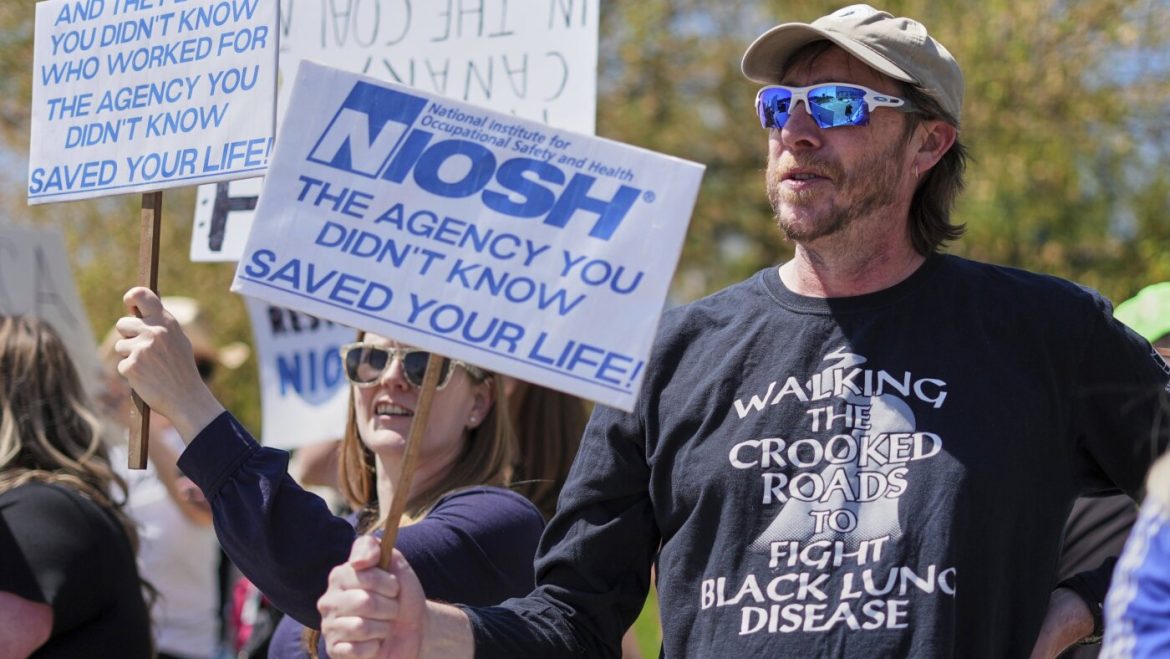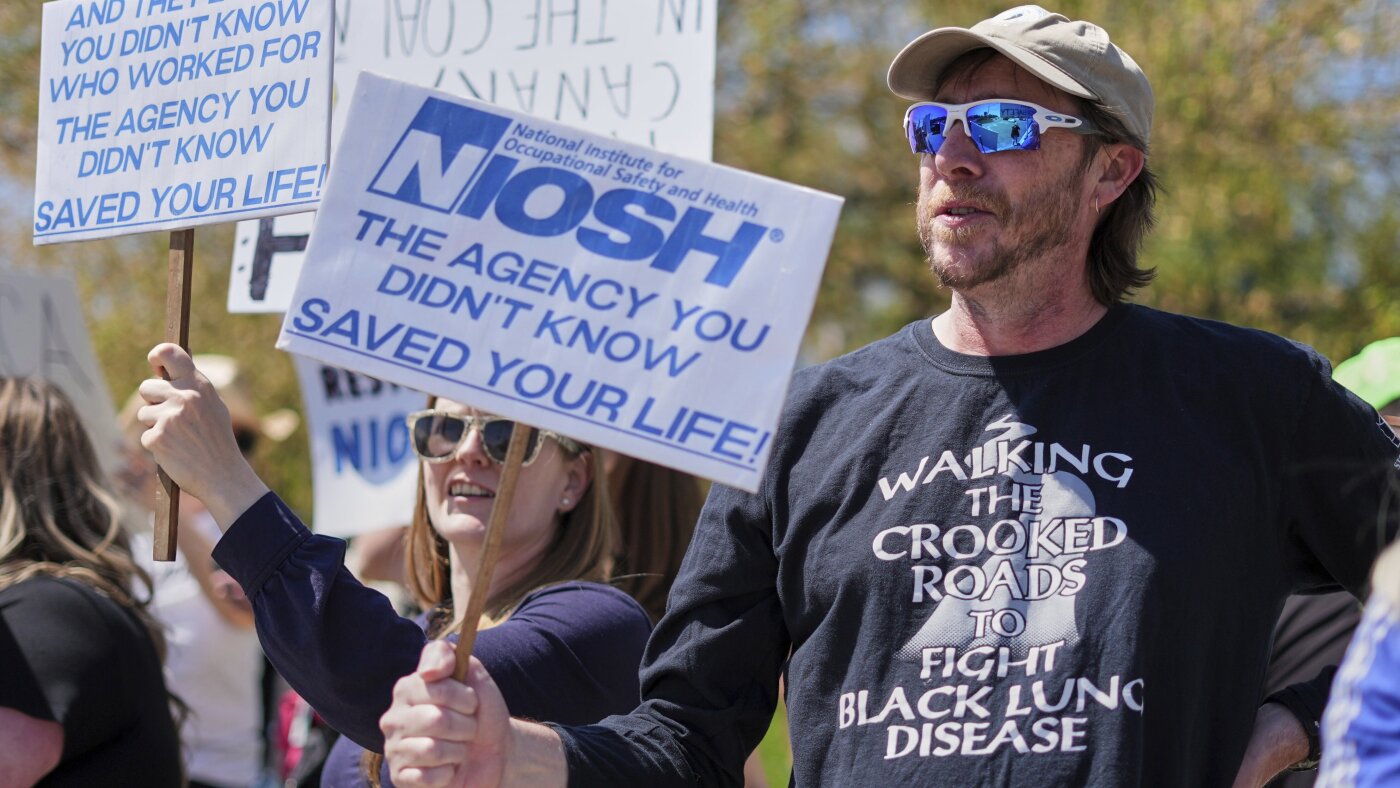The recent wave of personnel reductions and subsequent reinstatements within the U.S. Department of Health and Human Services (HHS) and its affiliated agencies, particularly the National Institute for Occupational Safety and Health (NIOSH), encapsulates a complex interplay of political decisions, legal pressures, organizational restructuring, and public health priorities. This unfolding scenario reflects the profound impact of administrative policies on the national health infrastructure, especially those tasked with safeguarding worker health and disease surveillance, notably in high-risk sectors like coal mining.
Introduction: Navigating the Turbulence in U.S. Public Health Agencies
Over the past few weeks, the federal health landscape has been marked by drastic reductions in workforce, targeted layoffs, and the contentious process of reinstatement. The initial intent appeared to be a sweeping reorganization aimed at streamlining operations and refocusing agency missions. However, the response from Congress, the judiciary, health professionals, and affected workers reveals a more tumultuous reality—one where public safety, worker health, and institutional integrity are at stake. Understanding this scenario requires a detailed exploration of the key developments, motivations, consequences, and mounting concerns that define this period.
The Scope of Staffing Reductions: An Unprecedented Downsizing
At the heart of this upheaval lies NIOSH, a critical agency responsible for occupational safety and health surveillance. Originally slated to lose over 900 workers—constituting more than 90% of its staff—the agency faced what would be arguably one of the most severe reductions in its history. This magnitude of downsizing raised alarms among public health advocates, workers’ rights organizations, and regulatory bodies, given NIOSH’s foundational role in monitoring workplace hazards, conducting research, and providing data essential for protecting American workers.
The comprehensive nature of these layoffs was unprecedented, with reports indicating that hundreds of employees across facilities, especially in Washington and West Virginia, faced termination notices. For example, the agency was among the divisions hardest hit by what some viewed as an aggressive push towards organizational restructuring under the Trump administration’s policies. The scope extended beyond NIOSH, impacting other HHS agencies responsible for research, disease tracking, and regulatory oversight, including the CDC’s efforts in coal miner health protection.
The layoffs affected diverse personnel categories—researchers, scientists, doctors, support staff, and leadership—compromising the collective capacity to conduct vital health surveillance and research activities. As some staff members showed up for work only to be turned away, the stark reality of staffing reductions demonstrated the severity of the administration’s overhaul.
Legal and Political Counteractions: Reinstatement and Judicial Orders
Faced with widespread concern and legal challenges, authorities and Congress responded swiftly. A pivotal moment came when a federal lawsuit, initiated by a coal miner concerned about health protections, demanded the reinstatement of health workers responsible for black lung disease screening—a disease caused by long-term coal dust exposure, which remains incurable and deadly. This legal action, along with political advocacy from certain members of Congress—especially Republicans representing coal-dependent regions like West Virginia—prompted the Department of Health and Human Services to reverse some of its previous decisions.
Specifically, a U.S. district judge in West Virginia ordered HHS to restore its coal miner health surveillance division, leading to the reinstatement of at least 111 NIOSH employees in Morgantown. The reinstated staff perform critical functions such as screening coal miners for black lung disease, an issue of considerable public health concern in these regions. This judicial intervention underscores the judiciary’s role as a safeguard against administrative actions perceived to threaten public safety.
Moreover, the Department, under pressure, announced the reinstatement of a total of approximately 328 employees—highlighting a partial reversal of earlier aggressive layoffs. Secretary of HHS Robert F. Kennedy Jr. acknowledged these reinstatements during congressional hearings, though details about the specifics of the process remained limited.
Broader Context of Restructuring and Its Rationale
The government’s strategy appeared rooted in overarching organizational reforms aimed at aligning health agencies with what the administration claimed was a focus on “core missions,” possibly emphasizing efficiency, cost-cutting, and reorganization of administrative structures. The Trump-era policies, viewed by critics as prioritizing downsizing over public health priorities, sparked widespread skepticism. Critics argued that such restructuring would undermine essential functions such as disease surveillance, research capacity, and health safety monitoring, especially in vulnerable populations.
In particular, the merging of agencies and the restructuring of NIOSH into newly created entities like the Agency for Health Action (AHA) raised concerns about destabilizing established units with a proven track record of worker health protection. The concerns were echoed by professional organizations such as the American Society of Safety Professionals (ASSP), which urged Congress to scrutinize the reorganization to preserve NIOSH’s critical role in safeguarding worker health.
Furthermore, the broader context involved more than just layoffs. There were temporary halts on certain worker dismissals, such as the cancellation of layoffs for some health workers before Kennedy’s congressional hearing, illustrating ongoing internal negotiations and fluctuating policy stances.
Impact on Worker Safety: Focus on Coal Miners and Occupational Health
Of particular importance is the focus on occupational health, especially black lung disease screening among coal miners. The reinstatement of health workers responsible for this screening underscores concerns about potential gaps in surveillance critical for early detection and prevention. As a disease that is incurable and progressive, black lung presents a grave risk to miners. The abrupt staffing reductions threatened the continuity of these vital health protections.
Federal judge Irene Berger’s order for the reinstatement of nearly 200 workers conducting coal miner screenings highlights judicial recognition of the importance of these functions. These efforts are not only essential for individual patient health but also for broader epidemiological data needed to inform policy and safety standards in hazardous industries.
In recent weeks, even under previous administrations, temporary rehiring measures for coal miner screening staff had been implemented. The Trump administration, for example, rehired as many as 40 workers temporarily, acknowledging the importance of maintaining surveillance functions amid policy changes. Nevertheless, the reductions still posed risks of underreporting and delayed detection of occupational diseases.
Complications and Challenges: Legal, Political, and Organizational
Despite the partial reinstatements, the situation remains fraught with complications. The initial layoffs, motivated allegedly by restructuring aimed at cost savings or mission realignment, signaled a potential deprioritization of worker health initiatives. Many employees, especially those involved in research and surveillance, found themselves scrambling to adapt to organizational upheaval.
Legal challenges have been pivotal in pressing for the preservation of vital functions. These challenges, along with congressional scrutiny, serve as checks on administrative overreach. The judiciary’s orders effectively underscore that certain health protections—especially those concerning vulnerable populations such as coal miners—must not be compromised by administrative restructuring.
Organizationally, the turmoil raises questions about the long-term stability of NIOSH and similar agencies. Staffing uncertainties can hamper ongoing research, disrupt surveillance programs, and erode institutional knowledge—consequences that could have lasting impacts on public health.
Public Concerns and Advocacy
Public health experts, worker advocacy groups, and legislators have expressed concern over the potential weakening of the occupational health system. For instance, the American Society of Safety Professionals (ASSP) voiced concern over the reorganization, urging Congress to carefully review the decision to transfer NIOSH under the newly created AHA and to take steps to safeguard its role.
Similarly, the broader community worries that the large-scale layoffs and restructuring might lead to diminished research capacity, compromised disease tracking, and less effective health protection programs for vulnerable workers. These fears extend beyond just the occupational sector, touching on the integrity of national disease surveillance systems and federal public health infrastructure.
Conclusion: The Enduring Significance of Protective Oversight
The recent events surrounding the layoffs and reinstatements at NIOSH and other HHS agencies serve as a potent reminder of the delicate balance between administrative restructuring and the imperatives of public health safety. While organizational reforms are often driven by legitimate goals such as efficiency and mission clarity, they must not come at the expense of the foundational work that protects millions of Americans—particularly workers exposed to hazardous conditions.
The judiciary’s intervention signifies a recognition that safeguarding worker health and maintaining surveillance capabilities are non-negotiable priorities. Moving forward, this episode underscores the importance of vigilant oversight, stakeholder engagement, and the need to preserve the core functions that uphold health and safety standards nationwide.
Impactful Takeaway: Ensuring Resilience in Public Health Systems
Ultimately, this episode highlights a vital truth: robust, well-staffed public health agencies are the backbone of a resilient health system capable of adapting to crises, monitoring risks, and protecting vulnerable populations. Political or organizational changes must be carefully calibrated to preserve—and ideally strengthen—these essential services. Protecting worker health, especially in hazardous industries, demands unwavering commitment, transparent decision-making, and the recognition that investments in public health infrastructure are investments in the nation’s overall well-being.


